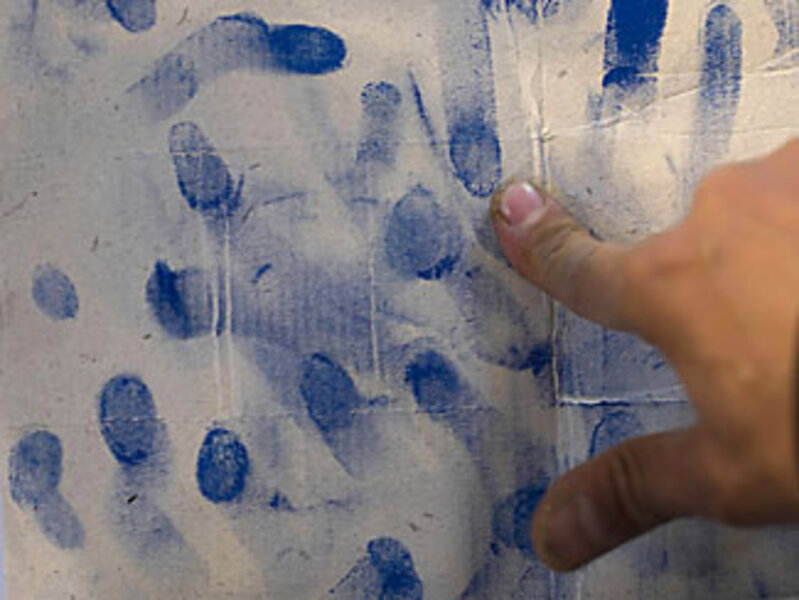Fingerprints as unique as we are
Loading...
"Office of the Attorney General" stated the return address on an official-looking envelope that had just arrived in my mail. I opened it and read: "NJ law requires ... background checks on all health professionals ... schedule appointment ... fingerprints electronically recorded.…"
My colleagues soon informed me that they, too, had received a letter of this kind. We were all to experience, firsthand, the science of dactyloscopy – identification by means of fingerprints. Brand new digital images of our skin patterns would be joining those of about 40 million other people stored by the Federal Bureau of Investigation.
I arrived at the designated location to find the waiting room jam-packed. There sure are lots of fingers here, I thought. But technology was ready. Instead of old-fashioned messy ink pads, there were neat electronic scanners.
I placed one finger at a time on the glass plate and my prints appeared immediately as well-defined black squiggles on a white computer screen. It was impressive.
"How do you match these?" I asked the technician.
"We look at specific ridge formations," he said. "For example, here," he pointed, "is a bifurcation in this line on your thumb."
Sure enough, one of my squiggles split off into a tiny little branch. All those distinctive designs, I learned, are divided into patterns of three main groups: Arches, loops, and whorls. No two people have the same exact configuration. And whatever pattern you possess is permanently yours. I gazed at the array of squiggles on the screen.
"That's me," I said.
"That's you," the technician said.
Now and then, during my growing-up years, I had wondered who and what exactly is that "me." I would look at my hands and face, legs and toes – seeing similarities to members of my family. Yet when it comes to fingerprints, I learned, each one of us is unique. There are no duplicates. Ever. Not even in identical twins.
That can be a rather monumental thing to think about: I am the only one in the universe to possess this miniature motif on my fingertips. And every other human who has ever lived, or is yet to come, can say the same.
This was nothing new to the people of ancient China and Assyria. There, they used their thumbprints to seal legal documents – as irrefutable a signature as anyone can produce.
Thomas Bewick, an 18th-century British engraver and naturalist, used this anatomical advantage to identify his work.
In the late 19th century, British scientist Sir Francis Galton zeroed in on all those fingerprint arches, loops, and whorls for official identification purposes. He studied and then described them in glorious detail, including their qualities of permanence and individuality. And so, the basis of our current 10-digit classification system was born.
Although most animals don't possess digital definition like their human counterparts, they still leave plenty of impressions by identifying prints – of paws, feet, and hoofs. And their marks provide adequate evidence.
My fellow naturalist sleuths and I have often walked through the woods, eyes toward the ground, searching for the countless tales told in mud or snow of creatures that have passed this way: Split-hoof patterns of white-tailed deer, dainty stitchery made by the feet of mice and voles, "jump dots" of squirrels and rabbits, the large "Y's" of wild turkey feet. (These are perhaps not as individual as human fingerprints, but they are still specific to the species.)
Yet no matter if an autograph is made by man or animal, there still seems to be something important in the leaving of that mark – whether accomplished unintentionally or by deliberate design. Whether the signs consist of carefully placed footprints on new snow, handprints on wet cement, or initials carved into tree trunks, they all proclaim in their own way, "I was here. I exist."
But in spite of everyone's individuality, we humans are connected by significant similarities. Shared life experiences abound. joys and sorrows, hopes and disappointments, victories and vicissitudes: "That's exactly how I feel, too ... the same thing happened to me ... I know just what you mean." There may be variations on this theme, but countless commonalities continue.
We are, it seems, all in the same cosmic boat. Yet each sailor, in the final count, remains unique – as is so clearly confirmed by our fingerprints.





